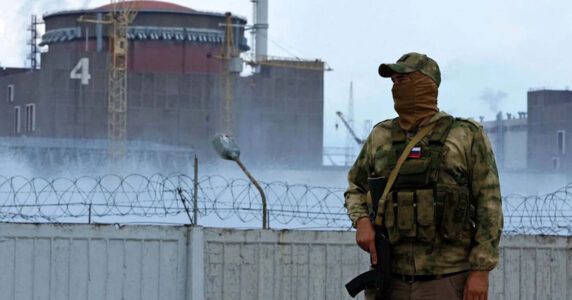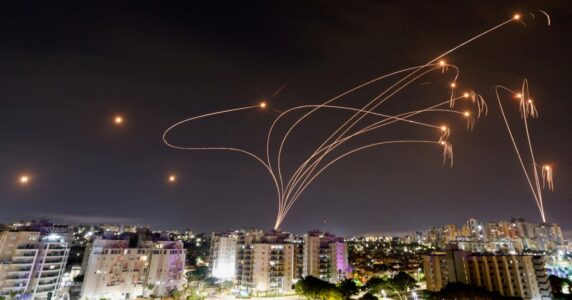Navigation and useful materials
The new security crisis in Eastern Europe can be described by the following question: will Putin resort to a large-scale invasion of Ukraine? No one, perhaps not even the Kremlin master himself, is ready to give an unequivocal answer to this question.
Since the end of October, Russia has been doing its best to prove its ability to defeat the Ukrainian army in the near future. Under the formal pretext of exercises, more than a hundred thousand strike groups are concentrated on Ukraine’s borders. At the same time, the threat looms from several directions: traditionally from the East and the ORDLO, from the sea and the Crimea, and recently also from Belarus, which is rapidly losing the remnants of sovereignty in favour of Russia.
The invasion bluff is like blackmail to impose Russia’s own agenda: a hypothetical “new Yalta”, i.e. the distribution of spheres of influence in Europe, as it happened at the end of World War II. But diplomatic blackmail can also be a smokescreen for preparing for a real invasion of the resilient Ukraine.
Since 2014, Ukrainians have become accustomed to living in conditions of permanent military and political confrontation with Russia. The autumn tensions made them remember their anxieties in 2015, 2018 and the spring months of the past year. However, the determination to resist did not waver. In the end, most experts agreed that the intended use of the Russian armada assembled at our borders is unlikely.
Simple logic and experience of recent years suggest that a significant military advantage is not enough for Russia to escalate the conflict. However, Ukraine is not inclined to create a casus belli — a formal reason for the development of aggression against itself.
So, Russia inspires alleged reasons by itself.
On December 1, Russian media outlets spread a fake allegation that a group of peaceful migrants crossing the Belarusian-Ukrainian border had been shot dead by either border guards or the Ukrainian military. In a little over a week, the Russians were already preparing to “defend” the Kerch Strait from the Ukrainian Navy ship Donbas, which did not really intend (nor was able) to break through from the Sea of Azov to the Black Sea.
And then it was time for “incidents” in the Russia-occupied Donbas. On December 21, at an extended meeting of the board of the Russian Ministry of Defence, which was attended by Putin, the head of the department Sergey Shoigu complained about the military development of Ukraine by NATO countries. The Minister saw a threat in the supply of helicopters, combat drones and anti-tank missile systems to Ukraine, but among other things he made the following surprising statement:
“We have established the presence of over 120 employees of American private military companies in the localities Avdiivka and Pryazovske in Donetsk oblast. They are equipping firing positions in residential buildings and socially significant facilities, preparing Ukrainian special operations forces and radical armed groups for active hostilities. Tanks with an unidentified chemical component were delivered to the cities of Avdiivka and Krasnyi Lyman to carry out provocations. The number of shellings of peaceful quarters of the Donbas and positions of the People’s Militia of the LPR and DPR by the Ukrainian military is not decreasing.”
Russian disinformation channels instantly turned “tanks with unidentified chemical components” into “proven facts” of availability of chemical weapons and Ukraine’s alleged readiness to use them. Apparently, this was supposed to happen with the help of American mercenaries mentioned by Shoigu.
Each of these fakes — about shot refugees, the naval provocation, American mercenaries with chemical weapons — opens the gateway to hell for a moment. And then one person decides whether or not to let the demons of war through this gate. It seems that the production of these news items is as routine for the Kremlin’s propaganda machine as the firing of Russian tanks in testing grounds near our borders.
Does Ukraine need to respond to Russia’s accusations, which may justify its aggressive actions? Yes, we have to do it, no matter how absurd the allegations. If Moscow needs to dress up as a victim or a peacekeeper to organize an invasion, we are forced to make it show its true colours.
So, let’s go over this statement point by point.
First, it is the Russian occupation forces in the ORDLO that are systemic violators of the ceasefire on the line of contact. Every day, the Ukrainian side records 5-10 cases of enemy shelling, of which up to 30% fall on weapons of more than 100 mm calibre, prohibited by the Minsk agreements.
Although Moscow does not recognize itself as a party to the conflict in the Donbas, it interprets the agreements reached in Minsk as legitimizing its right to intervene in favour of the so-called republics. On December 27, Russian Foreign Minister Sergei Lavrov once again threatened Ukraine for alleged violations of the Minsk agreements. Such unsubstantiated accusations against Ukraine by the Russian leadership may be enough to justify a new escalation.
Secondly, we do not need the services of private military companies, American or otherwise. Ukraine’s cooperation with the United States takes place at the official interstate level, and is carried out openly, within the framework of existing treaties, national legislation and international law. This also applies to the participation of the United States military servants in joint military exercises in Ukraine.
The mention of military mercenaries is nothing more than a projection on the United States of similar accusations that Washington brings up against Moscow in connection with the activities of the infamous “Wagnerians,” in particular in the Donbas.
Third, Ukraine complies with its obligations under the Convention on the Prohibition of the Development, Production, Stockpiling and Use of Chemical Weapons and on their Destruction Our country has never had chemical weapons, which it officially stated within the Organization for the Prohibition of Chemical Weapons.
Russian fakes about “tanks with an unknown chemical element” can serve as an excuse for attempts to fire targets in the territory controlled by Ukraine. Here, too, we are dealing with a projection of another situation, or even retaliation. We remind you that on April 7, 2017, the United States launched a strike on Syria’s Shairat airfield, in response to the use of sarin (combat poison) bombs by Putin’s ally Bashar al-Assad.
On December 24 , the international intelligence community InformNapalm published the Report on information countermeasures aimed at informing the population of Ukraine and residents of the territories of the Donbas temporarily controlled by Ukraine for 2021, which may be an internal document of the so-called Ministry of Information of the DPR.
Propagandists admit they are the ones who came up with the fake on chemical weapons. The most recent of the 54 “information diversions” in 2021, for which Donetsk Goebbelses report to their Russian supervisors, is “preparation for the publication (after a special order) of disinformation and staged photographs on the transfer of chemical weapons to the contact line area by Ukrainian military servants together with American and NATO specialists.”
The information attack made through Russia’s Defence Minister Shoigu, which is already disseminated by mouthpieces of the Russian propaganda as usual, is likely to fade away pretty soon and disappear from the agenda as fast as previous media products with their limited shelf life. It will have a chance for a longer life only under one condition—if it is actually used as justification for aggression.
If you have found a spelling error, please, notify us by selecting that text and pressing Ctrl+Enter.



